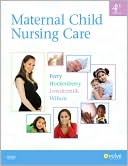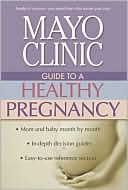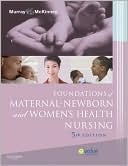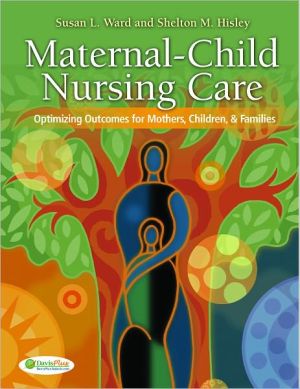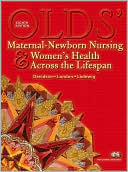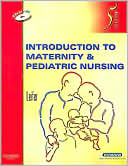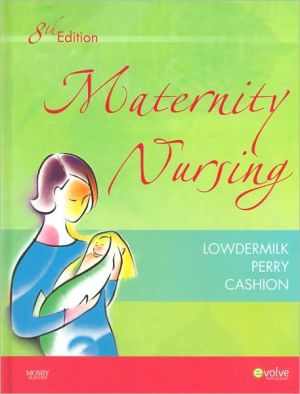Maternal Child Nursing Care
Search in google:
This market-leading textbook provides just the "right amount" of maternity and pediatric content in an easy-to-understand manner. Divided into two sections, the first part of the book includes 28 chapters on maternity nursing and the second part contains 27 chapters covering pediatric nursing. Numerous illustrations, photos, boxes, and tables clarify key content and help you quickly find essential information. And because it’s written by market-leading experts in maternity and pediatric nursing, you can be sure you’re getting the accurate, practical information you need to succeed in the classroom, the clinical setting, and on the NCLEX® examination.• UNIQUE! Nursing Alerts point out critical information to consider when caring for patients.• UNIQUE! Guidelines boxes outline instructions for skills or procedures in an easy-to-follow, step-by-step format.• UNIQUE! Emergency boxes offer quick reference to emergency procedures for critical maternity and pediatric emergencies.• UNIQUE! Home Care boxes offer helpful guidelines for delivering effective care in the home environment.• UNIQUE! Atraumatic Care boxes in the pediatric section illustrate how to provide competent nursing care without creating undue physical or psychological stress for pediatric patients, families, and nurses.• UNIQUE! Community Focus boxes examine community issues and provide resources and guidance on caring for families outside the clinical setting.• UNIQUE! Cultural Awareness boxes address culturally competent care for patients with a variety of customs and beliefs.• UNIQUE! Family-Centered Care boxes discuss the family’s role and needs in caring for the patient.• UNIQUE! Nursing Process boxes offer quick access to nursing process information for major diseases and conditions.• Critical Thinking Exercises provide case scenarios to promote sound clinical decision making.• Nursing Care Plans include rationales for interventions and provide specific guidelines for delivering effective nursing care.• Patient Teaching boxes highlight important information for communicating continuing care instructions to patients and families.• New and consolidated content on pain assessment and management focuses on this key aspect of pediatric nursing.• Updated content on evidence-based practice illustrates how current research can be used to improve patient outcomes.• The latest information in the field is included throughout, including expanded coverage of the late preterm infant and fetal heart rate pattern identification. Doody Review Services Reviewer:Robin Webb Corbett, PhD, RN C(East Carolina University)Description:This essential review of pediatrics and obstetrics uses numerous illustrations and critical thinking exercises with real-life situations to encourage student comprehension. This update of a 2006 edition reflects changes in nursing and knowledge with significant input from clinicians, educators, and students.Purpose:The book specifically covers newborns through adolescents and women during their reproductive years.Audience:The intention is to provide nursing students with the information and skills necessary to become competent and caring nurses. In addition, the book tries to facilitate critical thinking among nursing students in pediatrics and obstetrics. Features:Strengths of this book include the critical thinking exercises, the evidence-based practice boxes, and discussion of home care and family centered care as well as complementary therapies. Numerous color illustrations and photographs enhance the text.Assessment:This book is exceptionally well done. As a revised edition, it reflects the most current thinking in obstetrics and pediatrics, i.e., family centered care and atraumatic care. Topics are covered well and the book reads easily with special features such as home care guidelines and medication guides to facilitate student learning and comprehension.
Part 1: MATERNITY NURSINGUnit 1: Introduction to Maternity Nursing Contemporary Maternity NursingThe Family and CultureCommunity and Home CareUnit 2: Reproductive Years Health Promotion and Illness PreventionHealth AssessmentCommon Health ProblemsInfertility, Contraception, and AbortionUnit 3: PregnancyGenetics, Conception, and Fetal DevelopmentAssessment for Risk FactorsAnatomy and Physiology of PregnancyNursing Care During PregnancyMaternal and Fetal NutritionPregnancy at Risk: Preexisting ConditionsPregnancy at Risk: Gestational ConditionsUnit 4: ChildbirthLabor and Birth ProcessesManagement of DiscomfortFetal Assessment during LaborNursing Care During Labor and BirthLabor and Birth at RiskUnit 5: Postpartum PeriodMaternal Physiologic ChangesNursing Care During the Fourth TrimesterTransition to ParenthoodPostpartum ComplicationsUnit 6: NewbornPhysiologic Adaptations of the NewbornNursing Care of the NewbornNewborn Nutrition and FeedingInfants with Gestational Age-Related ProblemsThe Newborn at Risk: Acquired and Congenital ProblemsPART 2: PEDIATRIC NURSINGUnit 7: Children, Their Families, and the NurseContemporary Pediatric NursingCommunity-Based Nursing Care of the Child and FamilyFamily Influences on Child Health PromotionSocial, Cultural, and Religious Influences on Child Health PromotionDevelopmental Influences on Child Health PromotionUnit 8: Assessment of the Child and FamilyCommunication, History, and Physical and Developmental AssessmentPain Assessment and Management NEW!Unit 9: Health Promotion and Special Health ProblemsThe Infant and FamilyThe Toddler and FamilyThe Preschooler and FamilyThe School-Age Child and FamilyThe Adolescent and FamilyUnit 10: Special Needs, Illness, and HospitalizationChronic Illness, Disability, and End-of-Life CareCognitive and Sensory ImpairmentFamily-Centered Home CareReaction to Illness and HospitalizationPediatric Variations of Nursing InterventionsUnit 11: Health Problems of ChildrenRespiratory DysfunctionGastrointestinal DysfunctionCardiovascular DysfunctionHematologic and Immunologic DysfunctionGenitourinary DysfunctionCerebral DysfunctionEndocrine DysfunctionIntegumentary DysfunctionMusculoskeletal or Articular DysfunctionNeuromuscular or Muscular Dysfunction AppendixesA Relationship of Drugs to Breast Milk and Effect on InfantB Developmental/Sensory AssessmentC Growth MeasurementsD Common Laboratory TestsE Pediatric Vital Signs and Parameters
